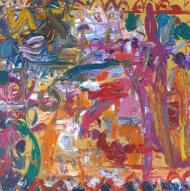In the early 1690s, the Massachusetts Bay Colony was the first of the Thirteen Colonies
to issue permanently circulating banknotes. The use of fixed
denominations and printed banknotes came into use in the 18th century.
In the early 18th century, each of the thirteen colonies issued their own banknotes. During the American Revolutionary War, the Continental Congress issued Continental currency to finance the war. The federal government of the United States did not print banknotes until 1862. However, almost immediately after adoption of the United States Constitution in 1789, the United States Congress chartered the First Bank of the United States and authorized it to issue banknotes. The bank served as a quasi-central bank of the United States. The bank closed in 1811 when Congress failed to renew its charter. In 1816, Congress chartered the Second Bank of the United States.
When its charter expired in 1836, the bank continued to operate under a
charter granted by the Commonwealth of Pennsylvania until 1841.
Cotton bills of exchange
were also used as money, but they were not banknotes. They were given
to planters in exchange for their cotton, but were not paid in gold or
notes until the cotton was sold in Liverpool. Any deficiency would
reduce the amount to be paid on the bill of exchange. The bills were
redeemable when notice was sent back to the United States. In the
meantime the bill of exchange holder could trade the note at a discount,
and the notes circulated as money.
In the early history of the United States there was no national currency and an insufficient supply of coinage.
Banknotes were the majority of the money in circulation. During
financial crises many banks failed and their notes often were paid out
of reserves, often below par value,
but sometimes the notes were worthless. Also, banknotes were discounted
relative to gold and silver, the discount depending on the financial
strength of the bank.
The Confederate Congress met in Montgomery, Alabama on 9 March 1861
and authorized the issuing of paper currency (in the form of
interest-bearing notes). Such notes were originally printed by the
National Bank Note Co.
In the United States, public acceptance of banknotes in replacement of precious metals was hastened in part by Executive Order 6102
in 1933. This order, which never actually led to anyone being
imprisoned, carried the threat of a maximum $10,000 fine and a maximum
of ten years in prison for anyone who kept more than $100 of gold in
preference to banknotes.

